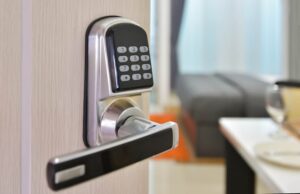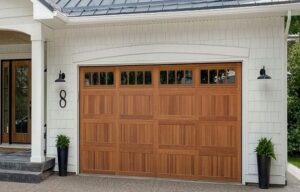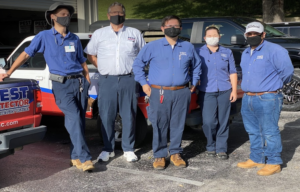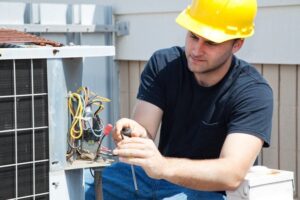Fire Doors in New Builds Compliance from Construction to Completion
4 min read
In the fast-paced world of new construction, attention to fire safety is non-negotiable. From the earliest planning stages to the final sign-off, fire doors play a critical role in the safety and compliance of any new development. Yet they are often misunderstood or incorrectly specified, leading to delays, legal risks, and costly remedial work.
This article explores the fire door responsibilities developers, contractors, and building managers face when delivering new builds—and how expert support from Capital Fire Doors ensures peace of mind and full regulatory compliance.
Fire Doors as Part of Passive Fire Protection
They don’t need to be activated—they work by design. Properly fitted and maintained, they help compartmentalise buildings, limit fire and smoke spread, and protect escape routes. In an emergency, this containment is vital for life safety.
In new builds, these doors must be considered in communal areas and across flat entrances, stairwells, plant rooms, service cupboards, and internal spaces requiring separation.
Understanding the Regulations
UK building regulations clearly require developers and construction professionals to incorporate compliant fire doors in all relevant areas.
Approved Document B (Fire Safety) of the Building Regulations 2010 outlines where fire doors are needed, the minimum fire resistance (e.g., FD30 or FD60), and standards for installation.
Fire doors must also meet specific product standards:
- BS 476-22 or EN 1634-1: Resistance to fire
- BS EN 1154 / 1155: Standards for self-closing devices
Failure to comply delays building control sign-off and can result in enforcement notices, rework, and long-term risk exposure for owners and occupants.
The Role of Certification
Every fire door installed must be certified as fire-resistant. This means:
- A permanent label or plug showing the manufacturer, fire rating, and test standard
- Third-party certification, such as BM TRADA or CERTIFIED
- Correct installation, using compatible components (closers, hinges, seals)
Even a correctly manufactured door will not protect if installed incorrectly.
At Capital Fire Doors, all doors are fully certified and installed by trained professionals who understand the specific needs of new-build compliance.
Common Pitfalls in New Developments
In practice, many construction projects encounter the same fire door issues:
- Wrong specification: Installing FD30 doors where FD60 is needed
- Incorrect installation: Gaps too large, seals not fitted, wrong fixings used
- Missing documentation: No traceable certification or installation records
- Substituted components: Incompatible ironmongery used to save cost
- Late-stage decision-making: Fire door planning left until the end of the build
Each of these can delay final inspections or invalidate warranty agreements. Avoiding them starts with early planning and working with a fire door partner from day one.
Specifying Fire Doors for New Builds
When planning fire doors for a new development, several factors must be considered:
- Use of the building: Residential, commercial, or mixed-use
- Layout and fire strategy: How fire and smoke will be contained
- Traffic levels: High-use doors may require more robust components
- Acoustic requirements: Especially relevant in apartments, hotels, or schools
- Accessibility and regulations: Doors must also comply with Part M (access) and DDA requirements
This is where specialist input becomes invaluable. The team at Capital Fire Doors can assist with product selection, regulatory advice, and integration into the overall fire strategy.
The Importance of Professional Installation
A well-specified door is only effective if it’s installed correctly. Unfortunately, fire door installation is too often left to general joinery teams who may not understand the strict tolerances or compliance requirements.
Professional installers ensure:
- The correct frame is used
- Door gaps are within tolerance (typically 3-4mm sides and top, max 8mm at the bottom)
- Intumescent and smoke seals are continuous and intact
- Closers and hinges are CE marked and fitted to spec
- Labels remain legible and undamaged
Capital Fire Doors’ installation teams are trained to ensure every fire door is compliant from day one.
Final Checks and Handover
Before completion, a final inspection of all fire doors is essential. This check should:
- Verify certification labels
- Test door operation and closure
- Check seal condition and correct fitting
- Confirm documentation is in place
Failure to complete these checks can delay building control’s sign-off. Developers often choose a third-party fire door inspection provider to ensure everything is in order.
Capital Fire Doors offers pre-handover inspections to help developers pass the first time and meet all regulatory and insurance requirements.
Long-Term Compliance: It Doesn’t Stop at Handover
Once the building is occupied, fire door maintenance becomes the responsibility of the managing agent or facilities team. Under the Fire Safety (England) Regulations 2022, this includes:
- Quarterly checks of communal fire doors
- Annual inspections of flat entrance doors in residential buildings over 11m
Even newly installed fire doors can fail within months if misused, damaged, or poorly maintained. That’s why developers and landlords increasingly build maintenance contracts into their handover packages.
Capital Fire Doors’ maintenance service provides ongoing compliance support, including inspections, repairs, and certification updates.
Why Work with Capital Fire Doors
Capital Fire Doors specialises in supplying, installing, and inspecting certified fire doors across the UK. For new builds, this means:
- End-to-end project support from planning to handover
- Supply of bespoke and standard fire doors, certified and tested
- Expert installation by qualified professionals
- Handover documentation, including asset registers and compliance certificates
- Post-handover maintenance and inspection programmes
By partnering early with Capital Fire Doors, developers avoid costly mistakes, streamline inspections, and deliver safer, compliant buildings.
Final Word
Incorporating fire doors into a new build isn’t just a box-ticking exercise. It’s about protecting lives, securing long-term compliance, and upholding your reputation as a responsible developer or contractor.
Whether you’re working on a housing scheme, commercial unit, or mixed-use development, fire door compliance must be integrated immediately. With the support of specialists like Capital Fire Doors, this is not only achievable but stress-free.
Contact Capital Fire Doors today to discuss fire door packages, specification advice, or installation support for your next project.






